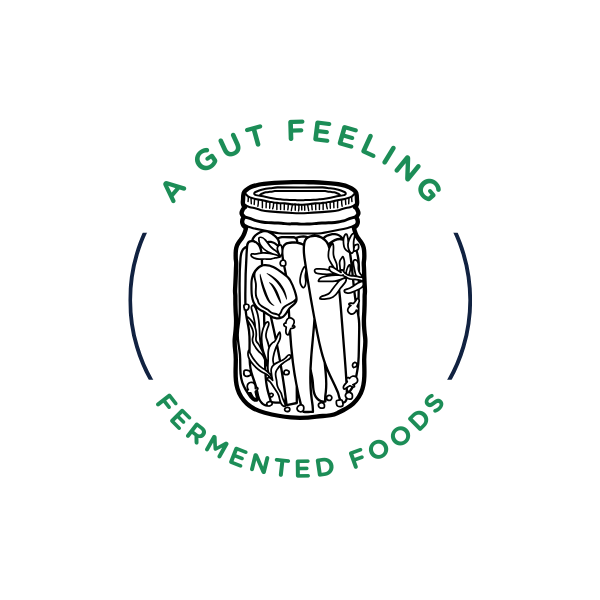How to Find Authentic, Live, Probiotic-Rich Foods in Your Area: A Guide
Because your gut deserves the real thing. Even if you live in Idaho.
Whether you’re new to fermented foods or a seasoned pro(biotic), here’s how to confidently find (or ask for) truly probiotic-rich, living ferments that nourish your gut and your family.
1. Shop the Cold Section—Alive Foods Stay Cool
If it’s not refrigerated, it’s not alive.
Real, raw ferments contain living bacteria that can’t survive shelf stable temperatures without being killed off.
What to look for:
• Cold, bubbly kombucha and ginger bugs(look for sediment or natural fizz)
• Fermented vegetables (like sauerkraut and kimchi)
• Raw dairy or fermented yogurt and kefir
• Fermented sauces and condiments
Red flag:
If it says “pasteurized” or “heat-treated,” the beneficial microbes are gone.
2. Read Labels with a Fermenter’s Eye
A good ferment is usually just a few ingredients. Whole Foods, salt & time. Learn to spot labels that look alive.
Green flags:
• “Unpasteurized” or “Raw”
• “Naturally fermented” or “Lacto fermented”
• “Contains live and active cultures”
• Ingredients like cabbage, sea salt, garlic—not vinegar, sugar, or preservatives
Red flags:
• “Vinegar” as the primary acid
• Sodium benzoate, potassium sorbate, or other preservatives
• “Shelf-stable” or “no refrigeration needed”
3. Ask the Right Questions at Farmers Markets or Health Stores
Here are some great questions to ask local makers:
• “Do you pH test your batches? If so, what’s the average range?”
• “How long is this fermented?”
• “Has it been pasteurized?”
• “Is this raw or heat-processed after fermentation?”
Their answers can tell you a lot about the microbial quality and their commitment to true fermentation.
4. Understand Fermentation Time: Longer = Stronger
Fermentation is a living process. Time allows microbes to break down fibers, sugars, and starches, enhancing probiotic load and nutrient availability.
Average fermentation times for high-quality products:
• Sauerkraut: 14–28 days minimum
• Kimchi: 7–21 days
• Kombucha: 10–20 days
• Yogurt: 12–24 hours (longer ferments reduce lactose)
• Sourdough: 24–72 hours (longer ferments increase digestibility)
Why it matters: Quick ferments often rely on starter cultures for rapid results and may not allow a full development of pro and postbiotics or complex beneficial strains.
5. Use pH Testing as a Quality & Safety Marker
A well-fermented food will have a naturally acidic pH protecting it from harmful pathogens and enhancing gut health.
Ideal pH ranges:
• Sauerkraut & kimchi: 3.5–4.2
• Kombucha: 2.5–3.5
• Yogurt/kefir: 4.0–4.6
• Sourdough: 3.8–4.5
6. Choose Glass Packaging Over Plastic or Metal
Fermented foods are naturally acidic, meaning they can draw chemicals from plastic or corrode metal over time. Glass keeps ferments pure, fresh, and safe. Yum! Fermented plastic!
Why glass wins:
• It’s non-reactive and protects probiotic integrity
• It prevents leaching of BPA, phthalates, or microplastics
• It’s better for long-term storage and flavor stability
• It’s reusable and environmentally friendly
Look for:
• Glass
7. Know What Real Ferments Taste Like
Living ferments have life and you can taste it. They’re bold, tangy, sometimes bubbly, and unmistakably fresh.
Signs your ferment is real:
• Fizzy or tangy on the tongue (not flat or overly sour like vinegar)
• Slight natural effervescence in drinks, condiments and sauces
• Cloudy brine or sediment (a sign of live activity—not spoilage!)
• No sugar forward sweetness unless intentionally flavored
8. Be Ingredient Informed, Not Just Brand Loyal
Some brands label their foods as “fermented” but use shortcuts like vinegar or post-fermentation pasteurization. Be brand aware, but ingredient smart.
9. Watch for Active Brines
A bubbly, cloudy brine = living probiotics.
Clear liquid may look clean, but in most cases, it means dead or dormant cultures (especially if vinegar was used).
How to test: Gently open the jar. Is it talking? See little bubbles rise? That’s microbial life in action!
10. Trust Your Senses
• Smell: Fresh, tangy, not rotten or rancid
• Look: Cloudy brine, floating herbs or garlic, no mold or fuzzy growth
• Taste: Slightly sour, salty, bright—not dull or bitter
• Feel: Fizzy, alive, satisfying, DELICIOUS
“For the word of God is living and active, sharper than any two-edged sword, piercing to the division of soul and of spirit, of joints and of marrow, and discerning the thoughts and intentions of the heart.”
Hebrews 4:12

